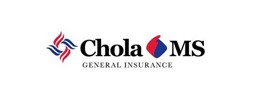Last updated on: September 19, 2025
The main concern people have with a ‘cost of 20 lakh health insurance’ is its affordability. Health insurance can be quite expensive and hard on the wallet. This particular health insurance plan seeks to ease that pain by offering flexible payment options that make it more budget-friendly. Additionally, it provides comprehensive coverage, so you won’t have to worry about unexpected medical bills. Another important feature is the network of hospitals included in the plan, meaning more choice and convenience when it comes to picking where to get medical attention. So, even though the cost sounds high initially, the plan aims to make health insurance more accessible and manageable for everyone.
Last year, Priya from Bengaluru faced a shock when her father needed heart surgery. The bill crossed ₹18 lakh in 10 days. Thankfully, he had a 20 lakh health insurance plan that covered most of the expenses, saving the family from stress.
This is becoming common. In 2025, medical costs are rising fast — about 14% every year. Smaller covers like ₹5 or ₹10 lakh are no longer enough. Big hospital bills, especially in cities like Mumbai or Delhi, can go beyond ₹15 lakh. So, a 20 lakh plan is now a smart choice. But people often ask: How much does it cost? What does it cover? Which plan is best?
Let’s understand everything about 20 lakh health insurance.
Premiums have gone up slightly due to rising hospital bills and more people buying bigger covers after COVID.
The exact premium depends on your age, health condition, city, insurer choice, and type of policy. Here are average annual premium estimates for a 20 lakh sum insured in 2025, based on the latest industry rates:
| Age Group | Individual Policy (yearly) | Family Floater (2 adults, 1 child) |
|---|---|---|
| 18 to 25 years | ₹5500 to ₹8500 | ₹18000 to ₹26000 |
| 26 to 35 years | ₹7400 to ₹12800 | ₹22500 to ₹32000 |
| 36 to 45 years | ₹10500 to ₹17500 | ₹29500 to ₹40000 |
| 46 to 60 years | ₹13500 to ₹25000 | ₹40000 to ₹60000 |
| 61 to 70 years | ₹27000 onwards | ₹65000 onwards |
These are broad guidelines for leading insurers. Some may offer lower or higher premiums depending on cover features.
Expert Insight: “Always compare at least three insurer quotes,” says Dr. Rohan Vaidya, a health insurance advisor in Mumbai. “The cheapest plan may miss add ons or have strict claim rules.”
The cost of a 20 lakh health insurance plan depends on several factors:
Plans bought at age 25 will cost much less than if you buy at 45 or 55.
Tip: Buy early and opt for a multi year policy if possible. Many insurers offer up to 15 percent discount if you pay for 2 or 3 years at once.
A 20 lakh health insurance policy is designed to handle almost any major hospitalization in 2025. But the actual benefits can differ by company and policy type.
Almost all standard 20 lakh sum insured health plans in 2025 cover:
Some advanced features you can expect:
Expert Insight: “Check if your plan has an annual sub limit on room rent or specific diseases,” advises Yogita Pradhan, a claims manager at a large insurance TPA. “Full cover is better than plans with many inner limits.”
Every policy has some exclusions. Typical exclusions in a 20 lakh health cover can include:
Always read your policy wordings carefully.
With hospital inflation galloping at 14 percent, many wonder if 20 lakh cover is sufficient in 2025.
Here is a simple way to calculate needed cover:
For example, in 2025, cost of a single major bypass surgery in a tier one city can reach from ₹6 lakh to ₹10 lakh or more. If further complications need ICU stay or post surgery care, costs can shoot up.
Analysis by IRDAI shows that over 60 percent claims for urban nuclear families now exceed ₹8 lakh per episode (up from 48 percent in 2022).
Tip: For young families and senior citizens, prefer a base cover of 20 lakh with super top up of another 20 to 50 lakh, especially if living in big cities.
Is it better to buy a 20 lakh health plan, or a lower cover and add top up later? Here is a quick comparison table:
| Sum Insured | Annual Premium (35 year old, family floater) | Coverage Level | Recommended For |
|---|---|---|---|
| 5 lakh | ₹10,500 to ₹16,000 | Basic | For smaller towns, singles |
| 10 lakh | ₹15,000 to ₹22,000 | Moderate | Small families |
| 20 lakh | ₹22,000 to ₹32,000 | Comprehensive | Urban families, seniors |
| 50 lakh (base) | ₹46,000+ | High, may be costly | Large families, HNI |
| 5 lakh (base) + 15 lakh super top up |
₹18,000 to ₹19,500 | Smart cost effective | Savers in good health |
Expert Insight: “Super top up plans on an existing base policy are cheaper ways to raise your sum insured as your needs grow,” says S. Narayanan, a financial therapist.
Premium calculation is a technical process that blends health, location, age, and features. Insurers use actuarial data to price risk.
These are the main elements:
For a healthy 30 year old in a metro, a standard 20 lakh cover will cost 20 to 30 percent less than the same policy for a 45 year old with minor health issues.
Tip: If you have no claims history, opt for higher voluntary deductibles. This can cut premium by up to 15 percent.
With about 30 insurers and more than 100 types of policies in the market, choices are wide.
Some of the most trusted companies for 20 lakh policies in 2025, based on claims, features and customer reviews, include:
Each of these plans offers slightly different features and claim practices.
| Insurer & Plan | Unique Feature | Network Hospitals |
|---|---|---|
| HDFC Ergo Optima Restore | Restore benefit for multiple claims | 13000 plus |
| Niva Bupa ReAssure 2.0 | Unlimited restoration & loyalty bonus | 10000 plus |
| Star Health Comprehensive | No disease wise sub limits | 13000 plus |
| Care Insurance Care Supreme | Global coverage option | 12000 plus |
Expert Insight: “Look for plans with at least 10000 cashless hospitals and lifetime renewability with no capping on major claims,” says Preetha Desai, a policy comparison consultant from Chennai.
Many insurers bundle useful add ons for a reasonable extra amount, making your 20 lakh policy even stronger.
Here are the best optional add ons in 2025:
For a family floater, adding OPD and maternity riders can increase your premium by 8 to 15 percent but increases peace of mind.
Tip: Do not opt for add ons you may never use. Review family needs every 2 years and adjust accordingly.
Premiums, claims, and features can be confusing, so it is good to compare before buying.
Many insurers now offer video KYC or at home nurse visits for medical checkups, making the process 100 percent digital.
Expert Insight: “Applying through a trusted aggregator like fincover.com ensures you get unbiased advice, transparent premium quotes, and professional claim support when needed,” adds Rahul Sen, a Mumbai based digital insurance advisor.
Most insurers allow sum insured increase at renewal if you have no recent claims. You may require a fresh health declaration or new underwriting. Sometimes, increasing from 5 to 20 lakh requires a port in or policy switch to a new age product.
Yes, but eligibility and premium will depend on age and existing health. Individuals up to 65 years can buy most plans; for those above 65, specialized senior plans are available but may have some sub limits and waiting periods.
For healthy adults, combining a smaller base policy with a large super top-up can be cost efficient. If you have older family members or frequent claims, a full base policy is more straightforward and offers more seamless cashless claims.
Use this guide to make your choice:
Expert Insight: “Assume medical costs will double in the next seven years and buy accordingly today. Health insurance is wealth protection, not an expense,” says Dr. Rohan Vaidya.
The cost of a 20 lakh health insurance plan in 2025 can range from ₹7400 for a young individual to ₹65000 for a senior family, but delivers crucial financial safety in real emergencies. Coverage and add ons should be chosen smartly. Always compare insurers, read the fine print, and buy early for the best premium. Sites like fincover.com help you compare and apply in minutes. Stay protected, keep your policy updated, and give your family the shield they deserve against rising medical costs.












How could we improve this article?
Written by Prem Anand, a content writer with over 10+ years of experience in the Banking, Financial Services, and Insurance sectors.
Prem Anand is a seasoned content writer with over 10+ years of experience in the Banking, Financial Services, and Insurance sectors. He has a strong command of industry-specific language and compliance regulations. He specializes in writing insightful blog posts, detailed articles, and content that educates and engages the Indian audience.
The content is prepared by thoroughly researching multiple trustworthy sources such as official websites, financial portals, customer reviews, policy documents and IRDAI guidelines. The goal is to bring accurate and reader-friendly insights.
This content is created to help readers make informed decisions. It aims to simplify complex insurance and finance topics so that you can understand your options clearly and take the right steps with confidence. Every article is written keeping transparency, clarity, and trust in mind.
Based on Google's Helpful Content System, this article emphasizes user value, transparency, and accuracy. It incorporates principles of E-E-A-T (Experience, Expertise, Authoritativeness, Trustworthiness).